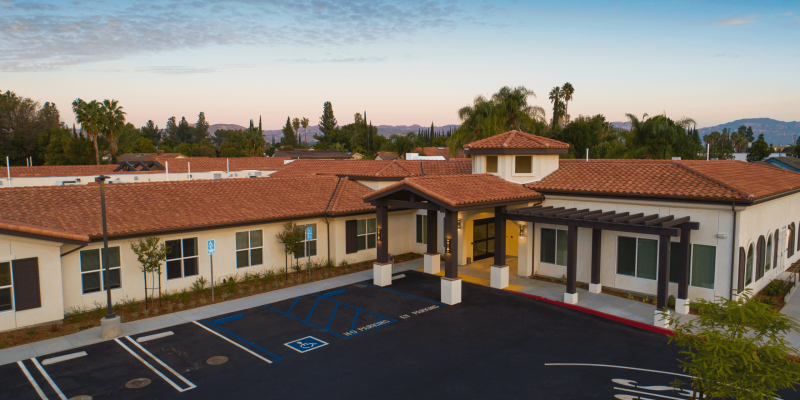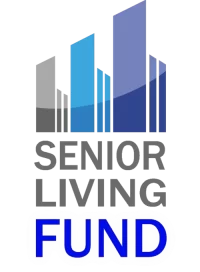Senior Housing Cap Rates
Trends and Investor Implications

Introduction
In Q3 2025, cap rates remain a central focus for senior housing investors. The capitalization rate, or cap rate, reflects the ratio of a property’s net operating income to its purchase price and serves as a proxy for yield. Because senior housing is an operationally intensive asset class with unique demographics and care requirements, its cap rates have historically run higher than other real‑estate sectors. Today, the sector offers some of the highest absolute yields in commercial real estate, even as cap rates have been tightening.
Cap Rate Trends Since 2021
Cap rates declined during 2021 as pandemic‑related NOI disruptions affected the numerator rather than valuations, but they ticked up again when interest rates began rising in 2022. By July 2025 the average senior housing cap rate across major markets was about 6.8 %, representing the highest absolute yield in more than a dozen years. CBRE’s first‑half 2025 investor survey recorded a 12‑basis‑point drop in the average cap rate over the prior six months, with independent living falling 20 bps and assisted living 16 bps, while memory care cap rates rose 8 bps. A concurrent CBRE analysis found core‑market Class A assisted living cap rates near 7 % and non‑core active‑adult and assisted living cap rates at 6.4 % and 7.4 %, respectively.
These figures underscore two important points. First, cap rates for senior housing remain higher than most other property types, providing investors with a meaningful yield advantage. Second, the direction of travel over the past year has been modest compression. Cap rates have moved down slightly despite interest‑rate volatility, a signal of strengthening investor demand and improved fundamentals.
Yield Spread and Comparison to Other Sectors
Senior housing’s cap‑rate premium over risk‑free benchmarks remains compelling. PGIM Real Estate research notes that senior housing is priced more than 150 basis points wider than traditional apartments. The spread to the 10‑year U.S. Treasury yield is approximately 252 basis points, more than double the spread available to investors in apartment properties. Even with cap rates clustered between 6.0 % and 6.8 %, the resulting 200–270 bps yield spread relative to the 4.13 % 10‑year Treasury (as of 7 October 2025) signals a robust risk premium. For context, multifamily cap rates hover around the mid‑5 % range, leaving a much thinner spread over Treasurys and a narrower cushion should interest rates rise further.
Investor Expectations and Outlook
Investor sentiment suggests cap rates may tighten further. CBRE found that nearly two‑thirds of respondents expect cap rates to decrease over the next year, while only about 16 % anticipate an increase. JLL’s 2025 investor survey similarly reported that 57 % of investors anticipate continued cap‑rate compression. According to PGIM Real Estate’s pricing model, today’s transaction cap rates are about 80 basis points higher than where equilibrium valuation cap rates are likely to settle based on historical risk premiums and expected income growth. This implies room for further compression as liquidity improves and net operating incomes rise.
Investors also differentiate by segment. Active‑adult communities saw the largest cap‑rate declines (‑20 bps) and now trade near the low‑to‑mid‑6 % range. Independent living and assisted living cap rates have compressed into the high‑5 % and low‑7 % range, whereas free‑standing memory care remains higher, around 9.6 %. Because memory care’s operating risk profile is more acute and supply is limited, its cap rates are unlikely to compress as much as other segments.
Implications for Investors
For long‑term investors, current cap rates offer both attractive income and potential price appreciation. A 6.5 % cap rate on a stabilized asset equates to a yield that exceeds most public equity dividends and many fixed‑income instruments. Should cap rates compress to their long‑term equilibrium, investors could see valuation gains in addition to strong cash flows. Higher cap‑rate spreads also provide a buffer if interest rates remain elevated. However, investors must be cognizant of operating risks: labor costs, insurance expenses and regulatory requirements can erode NOI if not managed effectively. Focusing on high‑quality assets with strong operators and resilient demand drivers can help capture the yield premium while mitigating risk.
Conclusion
By Q3 2025, senior housing cap rates stand out for their high absolute yields and meaningful premiums over Treasurys and other property sectors. While cap rates have inched downward, they remain elevated relative to historic norms and may compress further as fundamentals strengthen, and capital markets normalize. For investors seeking a blend of income and upside, senior housing cap rates provide a compelling entry point into a sector positioned for long‑term growth.
